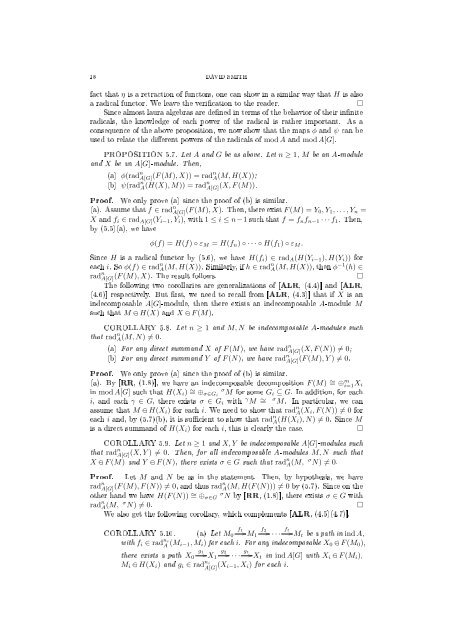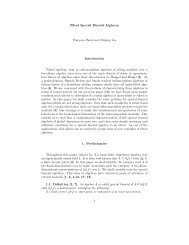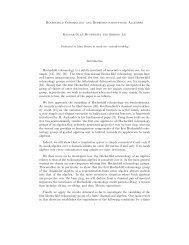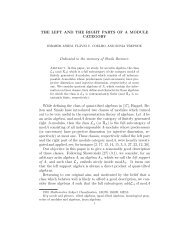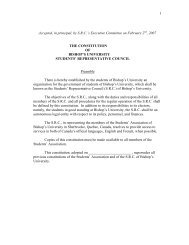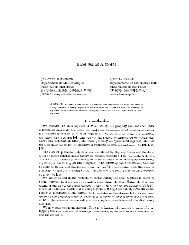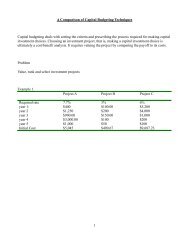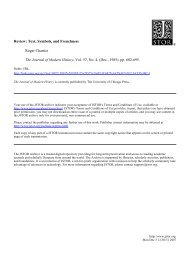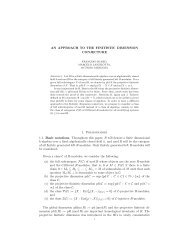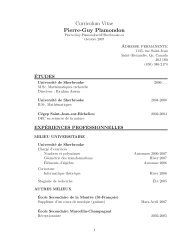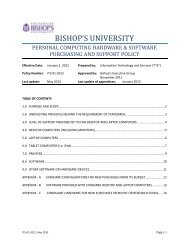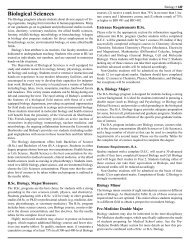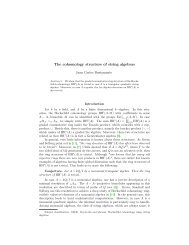Almost laura algebras
Almost laura algebras
Almost laura algebras
You also want an ePaper? Increase the reach of your titles
YUMPU automatically turns print PDFs into web optimized ePapers that Google loves.
18 DAVID SMITH<br />
fact that η is a retraction of functors, one can show in a similar way that H is also<br />
a radical functor. We leave the verication to the reader.<br />
□<br />
Since almost <strong>laura</strong> <strong>algebras</strong> are dened in terms of the behavior of their innite<br />
radicals, the knowledge of each power of the radical is rather important. As a<br />
consequence of the above proposition, we now show that the maps φ and ψ can be<br />
used to relate the dierent powers of the radicals of mod A and mod A[G].<br />
PROPOSITION 5.7. Let A and G be as above. Let n ≥ 1, M be an A-module<br />
and X be an A[G]-module. Then,<br />
(a) φ(rad n A[G](F (M), X)) = rad n A(M, H(X));<br />
(b) ψ(rad n A(H(X), M)) = rad n A[G](X, F (M)).<br />
Proof. We only prove (a) since the proof of (b) is similar.<br />
(a). Assume that f ∈ rad n A[G](F (M), X). Then, there exist F (M) = Y 0 , Y 1 , . . . , Y n =<br />
X and f i ∈ rad A[G] (Y i−1 , Y i ), with 1 ≤ i ≤ n−1 such that f = f n f n−1 · · · f 1 . Then,<br />
by (5.5)(a), we have<br />
φ(f) = H(f) ◦ ε M = H(f n ) ◦ · · · ◦ H(f 1 ) ◦ ε M .<br />
Since H is a radical functor by (5.6), we have H(f i ) ∈ rad A (H(Y i−1 ), H(Y i )) for<br />
each i. So φ(f) ∈ rad n A(M, H(X)). Similarly, if h ∈ rad n A(M, H(X)), then φ −1 (h) ∈<br />
rad n A[G](F (M), X). The result follows.<br />
□<br />
The following two corollaries are generalizations of [ALR, (4.4)] and [ALR,<br />
(4.6)] respectively. But rst, we need to recall from [ALR, (4.3)] that if X is an<br />
indecomposable A[G]-module, then there exists an indecomposable A-module M<br />
such that M ∈ H(X) and X ∈ F (M).<br />
COROLLARY 5.8. Let n ≥ 1 and M, N be indecomposable A-modules such<br />
that rad n A(M, N) ≠ 0.<br />
(a) For any direct summand X of F (M), we have rad n A[G](X, F (N)) ≠ 0;<br />
(b) For any direct summand Y of F (N), we have rad n A[G](F (M), Y ) ≠ 0.<br />
Proof. We only prove (a) since the proof of (b) is similar.<br />
(a). By [RR, (1.8)], we have an indecomposable decomposition F (M) ∼ = ⊕ m i=1 X i<br />
in mod A[G] such that H(X i ) ∼ = ⊕ σ σ∈Gi M for some G i ⊆ G. In addition, for each<br />
i, and each γ ∈ G, there exists σ ∈ G i with γ M ∼ = σ M. In particular, we can<br />
assume that M ∈ H(X i ) for each i. We need to show that rad n A(X i , F (N)) ≠ 0 for<br />
each i and, by (5.7)(b), it is sucient to show that rad n A(H(X i ), N) ≠ 0. Since M<br />
is a direct summand of H(X i ) for each i, this is clearly the case.<br />
□<br />
COROLLARY 5.9. Let n ≥ 1 and X, Y be indecomposable A[G]-modules such<br />
that rad n A[G](X, Y ) ≠ 0. Then, for all indecomposable A-modules M, N such that<br />
X ∈ F (M) and Y ∈ F (N), there exists σ ∈ G such that rad n A(M, σ N) ≠ 0.<br />
Proof. Let M and N be as in the statement. Then, by hypothesis, we have<br />
rad n A[G](F (M), F (N)) ≠ 0, and thus rad n A(M, H(F (N))) ≠ 0 by (5.7). Since on the<br />
other hand we have H(F (N)) ∼ = ⊕ σ σ∈G N by [RR, (1.8)], there exists σ ∈ G with<br />
rad n A(M, σ N) ≠ 0.<br />
□<br />
We also get the following corollary, which complements [ALR, (4.5)(4.7)].<br />
COROLLARY 5.10. (a) Let M 0<br />
f 1<br />
M 1<br />
f 2<br />
· · · ft M t be a path in ind A,<br />
with f i ∈ rad ni<br />
A (M i−1, M i ) for each i. For any indecomposable X 0 ∈ F (M 0 ),<br />
there exists a path X 0<br />
g 1<br />
X 1<br />
g 2<br />
· · · gt X t in ind A[G] with X i ∈ F (M i ),<br />
M i ∈ H(X i ) and g i ∈ rad ni<br />
A[G] (X i−1, X i ) for each i.


